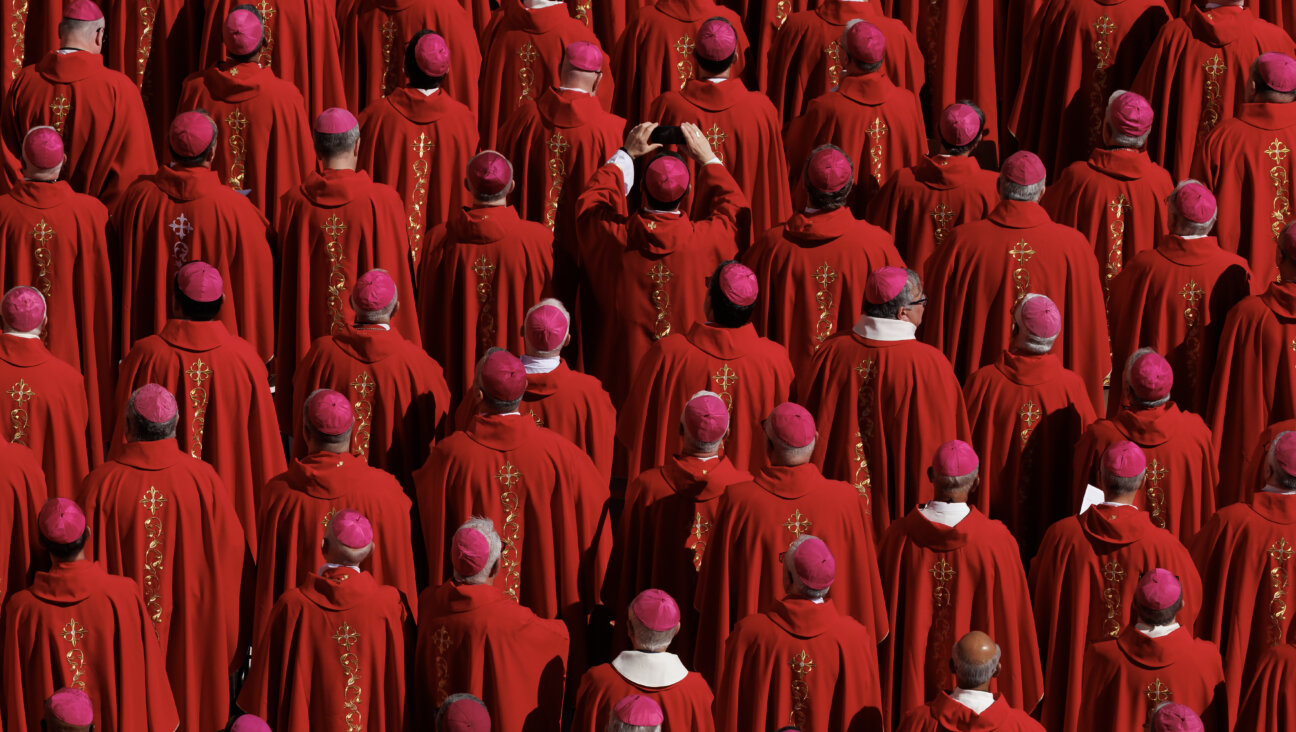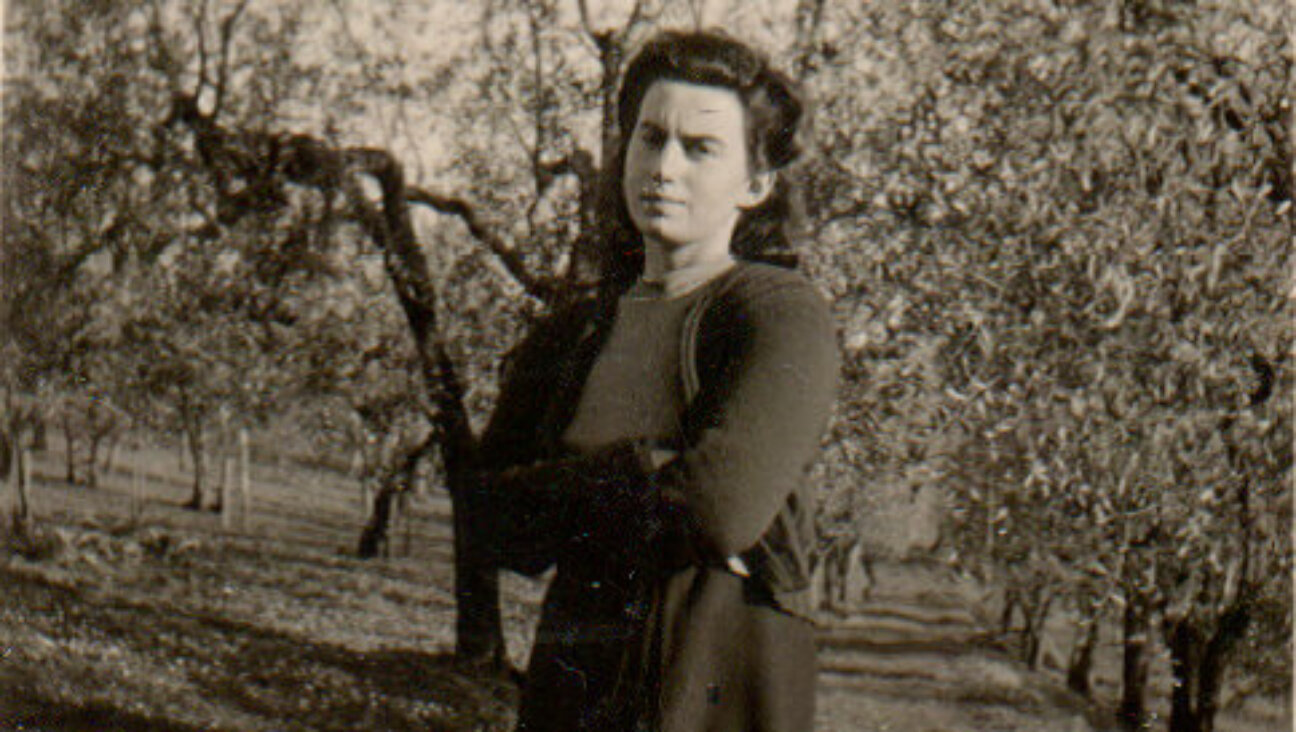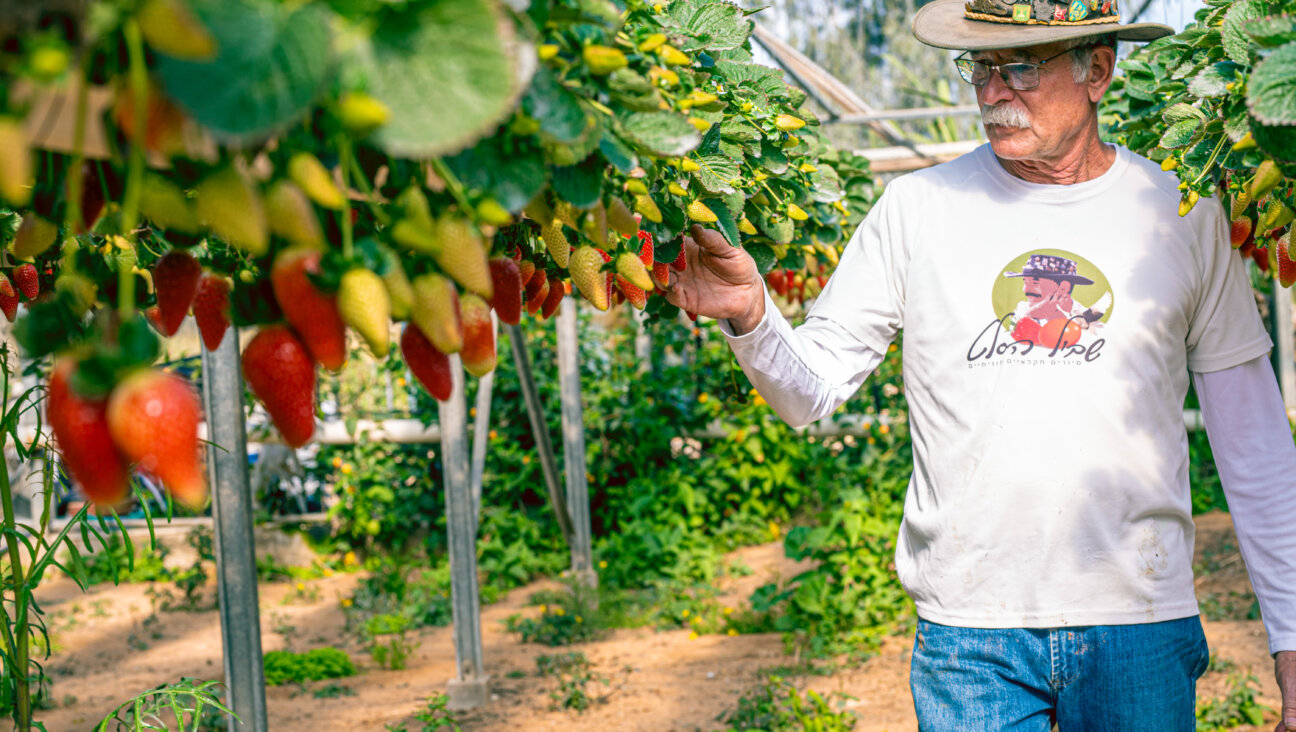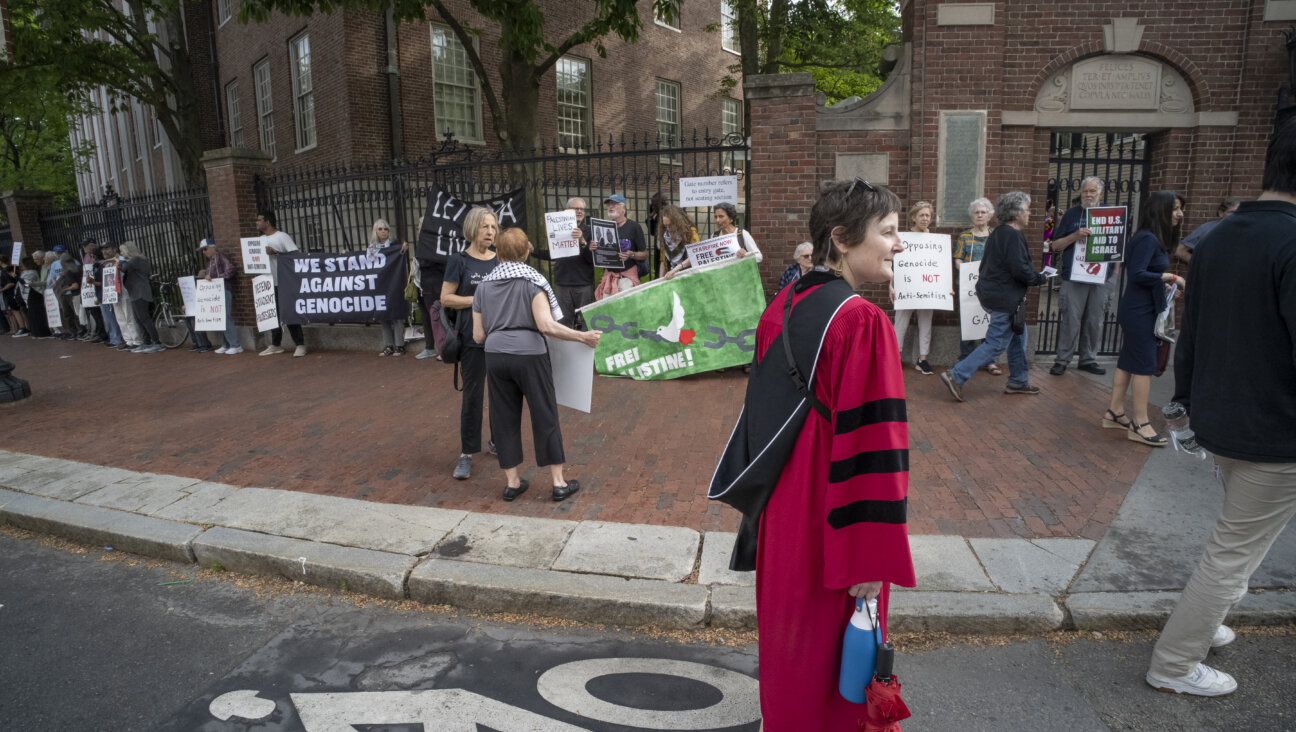Bird-Shaped Challah Holds Special Meaning for Rosh Hashanah

Image by Leah Koenig

Symbolic Shape: Bird-shaped challah for Rosh Hashanah symbolize God?s protection. Image by Leah Koenig
I don’t remember most of what my family ate on Rosh Hashanah when I was growing up. We likely had a platter of brisket and maybe a steaming tureen of tzimmes. There was probably a bottle of Martinelli’s sparkling apple cider on the table to be festive — but honestly, the details are fuzzy. What I do remember, however, is the challah my mom would bring home from the supermarket bakery: a fat, doughy spiral, brimming with jammy raisins. I would pull hefty chunks from the middle (bad challah etiquette, I know), dipping them into pools of golden honey and marveling at the rare opportunity to eat dessert for dinner. More than chicken soup, more than apples and honey even, that challah was my indication that the New Year had arrived.
Like most Jewish holidays, Rosh Hashanah is filled with rich food symbolism. The round challah on my family’s dinner table, for example, represented the cyclical nature of life, while the raisins evoked our wishes for a sweet year ahead. And while my family always kept things simple with the traditional apples and honey, some families (particularly Sephardic and Mizrahi) hold elaborate food seders at Rosh Hashanah dinner. Throughout the meal they eat particular foods — like leeks, beets, squash, pomegranate seeds and fish heads — ascribing to them metaphorical significance and blessings for the coming year.
More recently I learned that when it comes to challah, the rounded shape I was accustomed to eating on Rosh Hashanah is just one of several ways to imbue added meaning. Traditionally, some Ashkenazim formed other edible symbols out of the dough — things like crowns, which represented God’s majesty; ladders (a shape also commonly eaten before the Yom Kippur fast) to represent Moses’ ascent on Mount Sinai and our collective spiritual ascent throughout the holiday season; and, my favorite, birds.
According to “Joan Nathan’s Jewish Holiday Cookbook” (Schocken, 2004), bird-shaped challah rolls, called feygelekh (Yiddish for “little bird”) symbolized “the protection of God’s people as stated in Isaiah 31:5: ‘As birds hovering [over their fledglings], so will the Lord of hosts protect Jerusalem.’” Another interpretation, offered by Linda Burghardt in “Jewish Holiday Traditions” (Citadel, 2001) is that birds are a traditional symbol of mercy, making them the perfect emblem during a season of judgment. The same rolls served before Yom Kippur, writes Gil Marks in “The Encyclopedia of Jewish Food” (Wiley, 2010), represented the eater’s hope that “our sins should fly away and…. our prayers soar to the heavens.” In addition to their symbolic nature, it’s easy to imagine the delight of the children at the table when the challah cover is lifted to reveal a flock of edible birds!
Feygele challah originated, like many of these shapes, in 18th century Ukraine. The country was once called the breadbasket of Europe because its fertile, loamy soils produced great amounts of wheat, rye, barley and other grains consumed across Eastern Europe. Not surprisingly, Ukrainians are known for their reverence for bread. “To the Ukrainians, bread is one of the holiest of all foods,” wrote Savella Stechishin in her 1979 cookbook, “Traditional Ukrainian Cookery.” “The older people consider it most disrespectful when leftover pieces of bread are thrown about carelessly.” The country is renowned for its creative, masterful baking — both everyday breads and elaborate festival loaves like the sweet, decorative paska eaten on Easter. It’s no wonder, then, that Jewish Ukrainians baked their New Year’s challah with great care and intention.
Rosh Hashanah ushers in a holiday cycle shaped by complex spiritual emotions — solemn personal reflection on the one hand, and great joy and gratitude on the other. It seems only fitting that the foods we eat during the holiday should reflect and heighten the experience. So this year, I hope to bring feygelekh to my Rosh Hashanah table. Oven browned and sprinkled with seeds, they will be a sign of my own soaring hopes and blessings for the future. Plus, I’ll bet they taste fantastic dipped in honey.
feygelekh (Bird-shaped challah rolls)
Challah recipe adapted from Marcy Goldman’s “A Treasury of Jewish Holiday Baking”
Makes 12 rolls
4 teaspoons dry yeast
1/4 cup plus a pinch of sugar
1 1/2 cups warm water
1/4 cup honey
1 tablespoon salt
1/3 cup vegetable oil
4 eggs, divided
3 cups all-purpose flour
3 cups whole wheat bread flour
raisins, currants, pumpkin seeds, sesame seeds, sunflower seeds or flax seeds for decoration
1. In a large bowl, mix together the yeast, a pinch of sugar and water; let stand 3-5 minutes until foamy. Add remaining sugar, honey and salt, followed by the oil and three eggs, mixing well to combine.
2. Add all of the all-purpose flour and about 90% of the bread flour to the wet mixture and gently fold with a wooden spoon until the mixture comes together but is still quite wet. Tip the dough onto a clean work surface; knead for about 8 minutes while slowly incorporating as much of the remaining flour as necessary to make a supple, elastic dough. Place dough in a lightly oiled bowl, cover with plastic wrap or a dishtowel and let rise until almost doubled in size, from 45-90 minutes.
3. Preheat oven to 400 degrees and line two baking sheets with parchment paper. Deflate the dough and divide it into 12 small balls. Roll each ball into a 7-inch tube, leaving either end a bit thicker and more bulbous than the middle. Dust hands with flour; tie the tube into a knot and place on a baking sheet. Insert a pumpkin seed for a beak and two raisins (or whatever combination you prefer) for eyes on one end of the knot. Cut two small slices into the other end and fan out slightly, like a tail. Repeat with remaining dough balls.
4. Whisk the remaining egg in a bowl and brush over the tops of the rolls; sprinkle with additional seeds if desired.
5. Place baking sheet in the oven; turn oven down to 375 and cook for approximately 15-20 minutes until lightly browned and baked through. Remove from oven and cool on a wire rack.
Leah Koenig writes a monthly column for the Forward on food and culinary trends. Contact her at [email protected].
The Forward is free to read, but it isn’t free to produce

I hope you appreciated this article. Before you go, I’d like to ask you to please support the Forward.
Now more than ever, American Jews need independent news they can trust, with reporting driven by truth, not ideology. We serve you, not any ideological agenda.
At a time when other newsrooms are closing or cutting back, the Forward has removed its paywall and invested additional resources to report on the ground from Israel and around the U.S. on the impact of the war, rising antisemitism and polarized discourse.
This is a great time to support independent Jewish journalism you rely on. Make a gift today!
— Rachel Fishman Feddersen, Publisher and CEO
Support our mission to tell the Jewish story fully and fairly.
Most Popular
- 1

Fast Forward Ye debuts ‘Heil Hitler’ music video that includes a sample of a Hitler speech
- 2

Opinion It looks like Israel totally underestimated Trump
- 3

Culture Cardinals are Catholic, not Jewish — so why do they all wear yarmulkes?
- 4

Fast Forward Student suspended for ‘F— the Jews’ video defends himself on antisemitic podcast
In Case You Missed It
-

Culture How one Jewish woman fought the Nazis — and helped found a new Italian republic
-

Opinion It looks like Israel totally underestimated Trump
-

Fast Forward Betar ‘almost exclusively triggered’ former student’s detention, judge says
-

Fast Forward ‘Honey, he’s had enough of you’: Trump’s Middle East moves increasingly appear to sideline Israel
-
Shop the Forward Store
100% of profits support our journalism
Republish This Story
Please read before republishing
We’re happy to make this story available to republish for free, unless it originated with JTA, Haaretz or another publication (as indicated on the article) and as long as you follow our guidelines.
You must comply with the following:
- Credit the Forward
- Retain our pixel
- Preserve our canonical link in Google search
- Add a noindex tag in Google search
See our full guidelines for more information, and this guide for detail about canonical URLs.
To republish, copy the HTML by clicking on the yellow button to the right; it includes our tracking pixel, all paragraph styles and hyperlinks, the author byline and credit to the Forward. It does not include images; to avoid copyright violations, you must add them manually, following our guidelines. Please email us at [email protected], subject line “republish,” with any questions or to let us know what stories you’re picking up.















